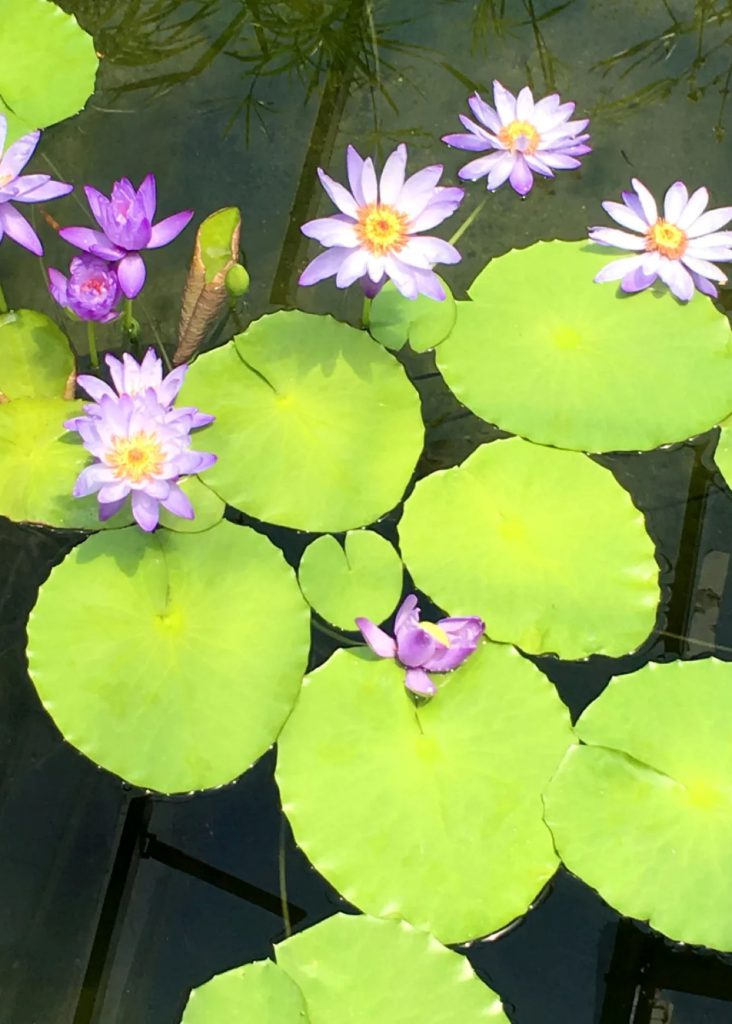
Various water lotus flowers are in bloom in the water lotus corner in the corner of the park. The flowers are what the visitors are looking for, but there must be many people who are fascinated by the vivid colors of the leaves that spread on the surface of the water. It can be called a young grass color or a young leaf color. In the above haiku, it was expressed as “萌黄 (moegi)”, but “moegi” may also be written as “萌葱” or “萌木”. The color of the young leaves that have just sprouted is “萌黄”, the color of the buds of green onions is “萌葱”, and the color of plants that sprout fresh green is “萌木”. As you can see, there are words in Japanese that express a subtle difference in green. The Japanese people have a unique sense of color, and it is said that they are a people who have words to identify and express subtle colors that are unparalleled in the world. I can make a book just by talking about the uniqueness of this color sense.
公園の一角にある水蓮のコーナーには様々な水蓮の花が咲いています。訪れる人達のお目当てはその花なんでしょうが、水面に広がる葉の色鮮やかさに目を奪われる人達も多いに違いありません。若草色と言ってもいい、若葉色と言ってもいいでしょう。上の俳句では「萌黄色」と表現しましたが、「もえぎ」にも、「萌葱」「萌木」とも書かれることがあります。芽吹いたばかりの若葉の色は「萌黄色」、ネギの芽の色は「萌葱色」、新緑が萌え出るような草木の色は「萌木色」と、微妙な緑色の違いを表す日本独自の言葉です。日本人の色彩感覚は独特で、世界でも類を見ないほど微妙な色を識別し、表現する言葉をもっている民族だと言われています。この色彩感覚のユニークさを語るだけでも一冊の本ができるでしょう。
